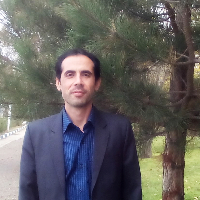Study of relationship between spatial variation of sediment yield and disrtribution of landform components (Case study: Qarasu watershed)
Erosion and sedimentation in watersheds has caused many problems in healthy and sustainable use of water and soil resources, and is considered as one of the major threats to global economic and environmental sustainability. The increase of sediment yield in watersheds has consequences such as dam filling, river diversion, conductivity capacity reduction of waterways and water facilities, and changes water quality for drinking and agriculture. So, spatial modeling and prediction of sediment yield in watersheds is very important, especially in arid and semiarid environments. In this regard, we should consider the whole process of erosion (destruction, transport and deposition), so that the relationship between inputs and outputs of the system are understood well. The Systematic view of geomorphology on the issue of erosion and sediment yield can be very effective and useful, considering the relationship between forms, materials and processes in the context of landform components. Recognizing the different processes of erosion and sediment production in the range of landform components can provide a more comprehensive and practical view of these processes in watersheds. Given the importance of the issue and the need to use digital elevation models in order to model the sediment yield variations, which have been recently considered, this study intends to analyze the relationship between the Landform components distribution and sediment yield in the Qarasu watershed, N.W. Iran.
We use extensive and integrated statistical analysis of non-parametric (χ2) and parametric (regression) methods to understand the relationships between sediment yield (S.Y) variation (dependent variable) and distribution of components or classes of landforms (independent variable). 19 sub-watersheds, which have sufficient and reliable data of sediment yield (ton/y), were selected for analysis. As catchment area acts as a misleading variable in the relationships between sediment yield and physiographic variables, a specific sediment yield (S.S.Y) (ton/km2/y) was used as a dependent variable. Also, an independent variable (landform components) was extracted of digital elevation model (DEM) with a resolution of 30 m. 6 landform classes, including 1- ridge 2- upperslope 3- midslope 4- toeslope 5- flat 6- valley, were delineated in the geographic information system (GIS) environment. Then, the percentage area of the landform classes was calulated as an independent variable. In order to perform the nonparametric test, it was necessary to convert the variables from quantitative to categorical and qualitative form. Classification of S.S.Y was done in 2 categories (low, high) and 3 categories (low, medium, high). Also, the classification (categorization) was done for the independent variable. These transformations and statistical tests were performed in the SPSS environment. The significance level of qualitative and quantitative tests were ≤ 0.05. It should be noted that the classes can be assumed to be both nominal and ordinal, ie low (1), medium (2) and high (3). Therefore, statistics related to the crosstabs can be obtained for both nominal and ordinal scales, indicating the quality and quantity of the relationships. On the other hand, the correlation test can be done in two ways, Pearson and Spearman.
In the first step, results of the non-parametric analysis showed that there are significant relationships between the distribution of S.S.Y classes and the Landform components classes expect 2 landforms: valley and ridge. meanwhile, the importance and certainty of the relationship between midslope and S.S.Y was determined in respect to repetition of significant relations during three χ2 tests. In the next step, the results of Pearson correlation analysis showed the positive correlation between ridge, midslope, valley landforms and S.S.Y. On one hand, and the negative correlation between upperslope, lowerslope and flat ladforms and S.S.Y on the other hand. The highest and lowest correlation coefficients were observed in midslope (R = 0.4) and upperslope (R = -0.03) components, respectively. The Results of the latest test, the Spearman correlation test, were indicative of similarities with the χ2 test, showing the significant relationships between flat, toeslope, midslope landforms and S.S.Y. Although more contribution of the midslope in sub-watersheds area and higher difference among sub-watersheds in terms of midslope contribution influence its relations with S.S.Y,("but" not needed) close and direct relationship between the midslope area and S.S.Y is attributed to high sediment supply and the occurence of dynamic sediment transport within this landform component.
Erosion and sediment yield (S.Y) within watersheds due to their extensive environmental dimensions as well as the complexity of the erosion process (destruction, transpotation and sedimentation) are the focus of systematic approach of geomorphology to provide useful and comprehensive knowledge of the inputs and outputs of the watershed system. Dividing the catchments into landform components and establishing a relationship between their distribution and S.Y of the catchments can be a key solution in this regard. In this research, applying the approach through both parametric (Regression) and non-parametric (Croostabs) statistical analyzes showed that important information about the relationships between landforms and S.Y can be acquireed at synthetic statistical method. Although the relationship between the independent and dependent variables in the qualitative test had superiority to the quantitative test in terms of the significance of the relationship, the type and strength of the relationship was determined by regression analysis. Meanwhile, the existence of a close and definite relationship between miidslope distribution and S.S.Y refred the necsessity for geomorphic prioritization of watershed management and soil protection measures in this landform class. In general, it seems that the classification of variables nominally and ordinally reduces the effects of residuals and makes the relationships of variables more meaningful. Furthermore, the distribution of landform components among the catchments and the existence of homogeneity/heterogeneity in this regard affect the quality and quantity of relationships, which is necessary to pay attention to in regional analysis of S.Y variations.
- حق عضویت دریافتی صرف حمایت از نشریات عضو و نگهداری، تکمیل و توسعه مگیران میشود.
- پرداخت حق اشتراک و دانلود مقالات اجازه بازنشر آن در سایر رسانههای چاپی و دیجیتال را به کاربر نمیدهد.




